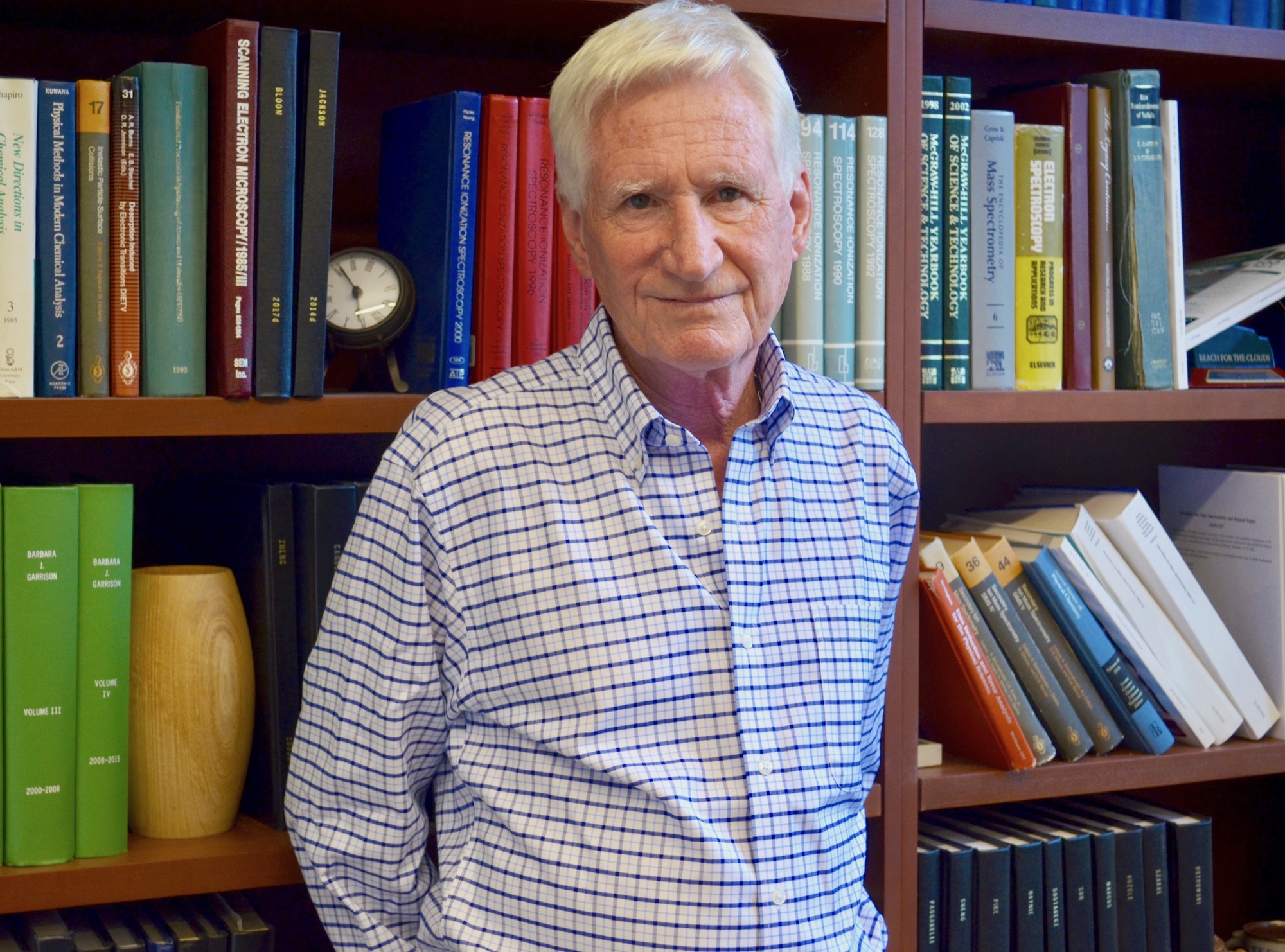
Professional Appointments and Affiliations
Evan Pugh University Professor of Chemistry Emeritus
Office
209 Chemistry Building
University Park, PA 16802
Email: nxw@psu.edu
(814) 863-0001
Education
B.S., Rensselaer Polytechnic Institute, 1967
Ph.D., Case Western Reserve University, 1970
Honors and Awards
Theodore E. Madey Award, American Vacuum Society, 2015
American Chemical Society Award in Analytical Chemistry, sponsored by Battelle Memorial Institute, 2012
Elected Councilor to the American Association for the Advancement of Science, 2007-2010
Elected Chair of The SIMS International Committee, 2005-2013
Elected Chair of Evan Pugh Professors at Penn State, 2002
Research
Mass Spectrometry imaging of biomaterials with cluster ion beams: chemical characterization of single biological membranes and cells; fundamental aspects of ion/solid interactions and the characterization of solid surfaces.
Surface Chemistry and Chemical Imaging of Biomaterials
Professor Winograd and his students are pursuing new ways to learn about the behavior of various molecular surfaces and interfaces. To accomplish this task, surface-sensitive techniques are being developed that yield the molecular composition of the top layers of a solid. These techniques are then applied to the characterization of surfaces with special relevance to biology and materials science.
Mass spectrometry plays a particularly important role in these experiments. Using energetic cluster ion beams, it is possible to desorb thermally labile molecules from almost any type of matrix and to extract the secondary ions into a time-of-flight mass analyzer. Moreover, these ion beams can be focused to a diameter of less than 100 nm such that the desorption occurs from a specific point on the sample. By scanning the beam over an area, molecule specific images are constructed that yield a map of the spatial distribution of a diverse set of molecules with nanometer precision. Research is aimed toward 1) understanding the fundamental aspects of the ion/solid interaction associated with this type of mass spectrometry, 2) seeking out novel schemes to broaden the scope of the measurements, and 3) pursuing science problems that cannot be carried out by other methods, particularly in biologically related fields. The group has recently discovered that Buckminsterfullerene projectiles have very special properties for molecular desorption and 3-dimensional imaging experiments, and an intense effort is underway to exploit this novel modality.
Fundamental studies are performed on well-defined model systems where it is possible to measure the trajectories of the desorbing neutral molecules in specific vibrational and electronic states. To perform these measurements, a special laser system has been developed that resonantly ionizes the neutral molecules by multiphoton excitation and enables extraction of both velocity and take-off angle information. These data are then compared with molecular dynamics computer simulations performed mainly by Professor Garrison and her students. These experiments are currently being optimized to elucidate the mechanism of desorption induced by cluster ion beams such as C60. The research provides valuable fundamental information about the mechanism of molecular desorption and suggests new experimental configurations to enhance the information content of the measurements.
There are several significant science problems where these techniques are having an impact. The group has a major collaborative effort with the Ewing group aimed toward elucidating the chemical composition of single biological cells. To achieve these measurements, the mass spectrometer is being coupled to a cryogenic system that allows biological cells to be examined using a freeze-fracture technique. The goal is to be able to map the chemical composition inside single cells and to identify the binding location of various small pharmaceutical agents with subcellular spatial resolution. This research requires an intellectual interest in instrumentation, surface science, and biological chemistry.
Selected Publications
K. Shen, J. G. Tarolli and N. Winograd, “Cluster Secondary Ion Mass Spectrometry Imaging of Interfacial Reactions of TiO2Microspheres Embedded in Ionic Liquids”, Rapid Communications in Mass Spectrometry, 30, 379-385 (2016).
H. Tian, A. Wucher and N. Winograd, “Dynamic Reactive Ionization with Cluster Secondary Ion Mass Spectrometry”, Journal of the American Society for Mass Spectrometry, 27, 285-292 (2016).
K. Shen, A. Wucher and N. Winograd, “Molecular Depth Profiling with Argon Gas Cluster Ion Beams”, J. Phys. Chem. C, 119, 15316-15324 (2015).
N. Winograd, “lmaging Mass Spectrometry on the Nanoscale with Cluster Ion Beams”, Analytical Chemistry, 87, 328-333 (2015).
A. Kucher, L. M. Jackson, J. O. Lerach, A. N. Bloom, N. J. Popczun, A. Wucher and N. Winograd, “Near Infrared (NIR) Strong Field Ionization and Imaging of C60 Sputtered Molecules: Overcoming Matrix Effects and Improving Sensitivity”, Anal. Chem., 86, 8613-8620 (2014).
M. K. Passarelli, A. G. Ewing and N. Winograd, “Single-Cell Lipidomics: Characterizing and Imaging Lipids on the Surface of Individual Aplysia californica Neurons with Cluster Secondary Ion Mass Spectrometry”, Anal. Chem, 85, 2231-2238 (2013).
D. Mao, C. Lu, N. Winograd and A. Wucher, “Molecular Depth Profiling by Wedged Crater Beveling”, Anal. Chem., 16, 6410-6417 (2011).
